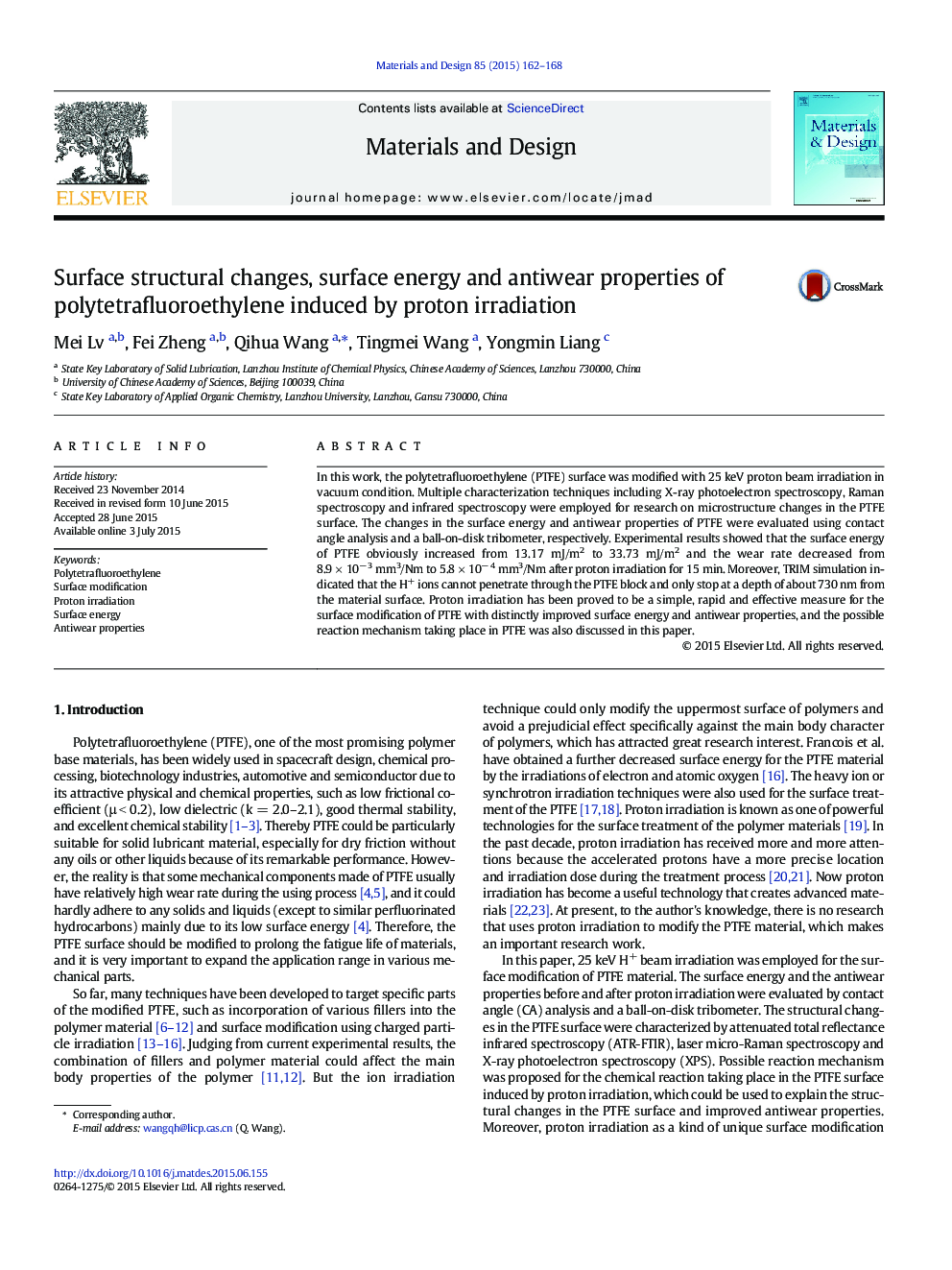| Article ID | Journal | Published Year | Pages | File Type |
|---|---|---|---|---|
| 828284 | Materials & Design | 2015 | 7 Pages |
•25 keV protons were used for the surface modification of PTFE.•The surface energy of PTFE was increased about 2.5 times after modification.•The wear rate of PTFE was decreased about 15–25 times after modification.•Proton irradiation induced defluorination reaction in the PTFE surface.•Proton irradiation was proved to be a useful technique to modify the PTFE surface.
In this work, the polytetrafluoroethylene (PTFE) surface was modified with 25 keV proton beam irradiation in vacuum condition. Multiple characterization techniques including X-ray photoelectron spectroscopy, Raman spectroscopy and infrared spectroscopy were employed for research on microstructure changes in the PTFE surface. The changes in the surface energy and antiwear properties of PTFE were evaluated using contact angle analysis and a ball-on-disk tribometer, respectively. Experimental results showed that the surface energy of PTFE obviously increased from 13.17 mJ/m2 to 33.73 mJ/m2 and the wear rate decreased from 8.9 × 10− 3 mm3/Nm to 5.8 × 10− 4 mm3/Nm after proton irradiation for 15 min. Moreover, TRIM simulation indicated that the H+ ions cannot penetrate through the PTFE block and only stop at a depth of about 730 nm from the material surface. Proton irradiation has been proved to be a simple, rapid and effective measure for the surface modification of PTFE with distinctly improved surface energy and antiwear properties, and the possible reaction mechanism taking place in PTFE was also discussed in this paper.
Graphical abstractFigure optionsDownload full-size imageDownload as PowerPoint slide
